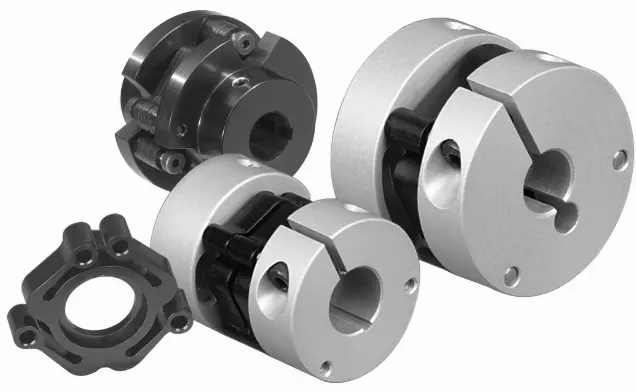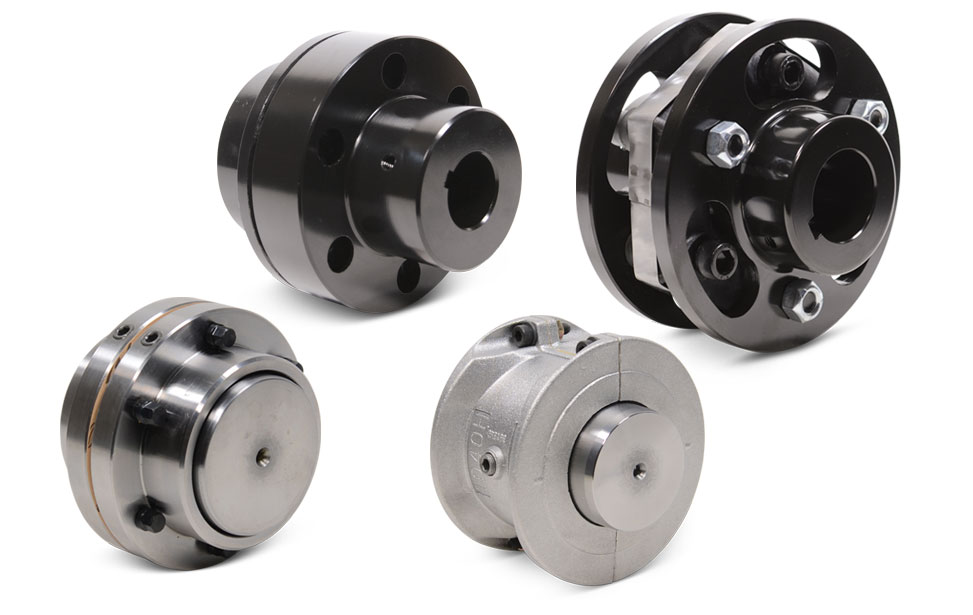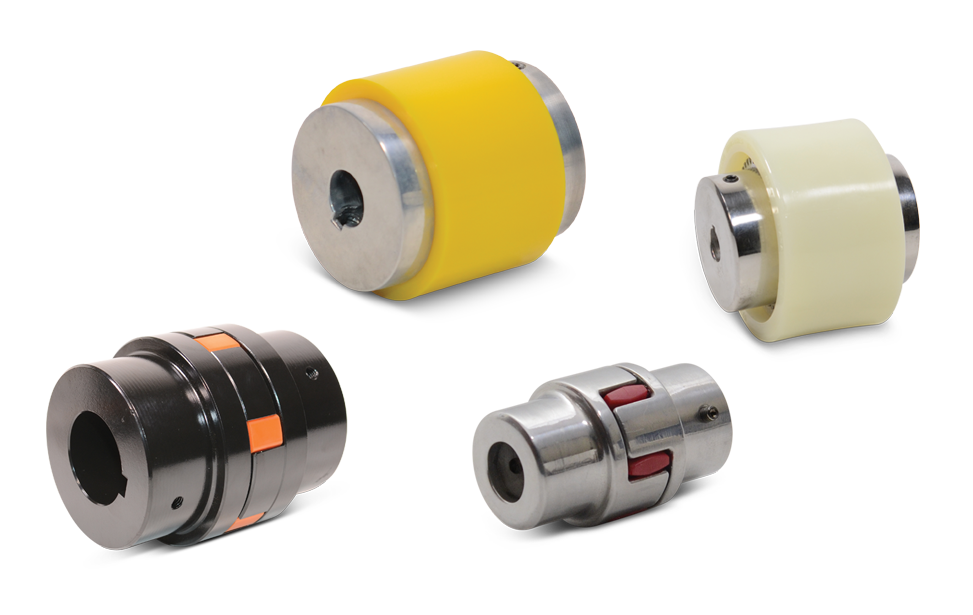Product Description
Durable Motor Shaft Coupling Flexible Couplings for Construction Passenger Hoist
Product Description
Plum-shaped flexible coupling consists of 2 prongs of the same shape with the coupling half and elastic components, the use of plum-shaped elastic element is placed between the 2 halves of the coupling prongs in order to achieve the 2 coupling halves connection. With a two-axis compensation relative offset , shock absorption, cushioning , small radial size , simple structure, no lubrication , high load capacity , easy maintenance, etc. , but replace the elastic element coupling halves need to move axially . Suitable for connecting 2 coaxial, frequent starting , low-speed , medium power transmission shaft lines require high reliability work site, not suitable for heavy load and axial dimensions after restricted , replace the elastic element of the difficulties the 2 axes site .
|
Model |
Rated Torque Tn |
Allowable Rotation Speed |
Bore Diameter d1 , d2 , dz |
Bore Length L, L1 |
Weight |
| N.m | r/min | mm | mm | kg | |
|
CLSJ50 |
28 |
15000 |
10-24 |
22-38 |
1.00 |
|
CLSJ70 |
112 |
11000 |
12-38 |
27-60 |
2.50 |
|
CLSJ85 |
160 |
9000 |
16-38 |
30-60 |
3.42 |
|
CLSJ105 |
355 |
7250 |
18-42 |
30-84 |
5.15 |
|
CLSJ125 |
450 |
6000 |
20-55 |
38-84 |
10.1 |
|
CLSJ145 |
710 |
5250 |
25-65 |
44-107 |
13.1 |
|
CLSJ170 |
1250 |
4500 |
30-85 |
60-132 |
21.2 |
|
CLSJ200 |
2000 |
3750 |
35-95 |
60-142 |
33.0 |
|
CLSJ230 |
3150 |
3250 |
40-95 |
84-142 |
45.5 |
|
CLSJ260 |
5000 |
3000 |
45-125 |
84-172 |
75.2 |
|
CLSJ300 |
7100 |
2500 |
60-140 |
108-172 |
99.2 |
|
CLSJ360 |
12500 |
2150 |
60-150 |
107-212 |
148.1 |
|
CLSJ400 |
14000 |
1900 |
80-160 |
132-242 |
197.5 |
why choose our product
Cheaper price than CHINAMFG brands, good quality.
Features:
1. The intermediate elastomeric coupler
2. Can absorb the vibration , compensate the radial , angular and axial misalignment
3. Anti- oil and electrical insulation
4. clockwise and counterclockwise rotation characteristics are identical
5. Locate the screws
Certifications
Company Profile
FAQ
1. What are your main products?
We produce Construction Hoist (also called construction elevator, construction lift) and spare parts of it.
2. Are all Construction Hoist the same from all Vendors & Manufacturers?
Our High rise building construction hoist with VFD for lifting materials and passengers have exported to Europe, Middle and southern America, most of Asia, and some countries from Africa, about 50 countries. We can well match European standards, Russia standards and America standards. We have technology for develope new design ability and we support many customer with good solutions to solve their construction site special vertical access problems.
3. Do your products have some certificates?
Yes. Our Construction Hoist have passed CE ,ISO Certificates.
4. What are the payment terms and the delivery time?
Payment terms are T/T and LC. We will ship the cargo within 7-21 days after receiving the 30% deposit.
5. Are you manufacturer or the trader?
We are manufacturer with 17 years maker experiences, have advanced production line and inspection device. Our Research and development team have got many praise from customers.
6. Will you develop distributor and sole agent?
Yes, should you have any interest to be our distributor and agent, please let us know in any ways. Sole agent is available depend on the sales turnover.
7. Where do you ship to and what countries have you done business in?
We provide quick and efficient shipping to countries all over the world from HangZhou port or other China port.
We have done business with customers in many countries, such as Mexico, Brazil, Korea, Malaysia, Thailand, India, Vietnam, Indonesia, UAE, Qatar, Kuwait,Saudi Arabia etc.

Understanding the Torque and Misalignment Capabilities of Motor Couplings
Motor couplings play a crucial role in transmitting torque from the motor to the driven equipment while accommodating certain degrees of misalignment between the shafts. Here’s a detailed explanation of their torque and misalignment capabilities:
Torque Transmission:
Torque transmission is one of the primary functions of a motor coupling. It refers to the ability of the coupling to transfer rotational force (torque) from the motor shaft to the driven equipment shaft. The torque capacity of a coupling depends on various factors, including:
- Coupling Type: Different coupling types have varying torque capacities. For instance, gear couplings have high torque capacity, making them suitable for heavy-duty applications.
- Material and Design: The material and design of the coupling elements play a role in determining its torque capacity. Couplings made from high-strength materials can handle higher torque loads.
- Size: The size of the coupling affects its torque capacity. Larger couplings generally have higher torque ratings.
- Operating Conditions: Environmental factors, temperature, and speed also influence the torque capacity of the coupling.
Misalignment Compensation:
Motor couplings are designed to accommodate a certain degree of misalignment between the motor and driven equipment shafts. Misalignment can occur due to factors such as manufacturing tolerances, thermal expansion, and operational conditions. The misalignment capability of a coupling depends on its type and design:
- Flexible Couplings: Flexible couplings, such as jaw couplings or elastomeric couplings, can handle both angular and parallel misalignment. They provide some flexibility to dampen vibrations and compensate for minor misalignment.
- Universal Joints: Universal joints can handle angular misalignment and are commonly used in applications requiring a high range of motion, such as vehicle drivelines.
- Disc Couplings: Disc couplings can handle angular misalignment and provide high torsional stiffness for precision applications.
- Bellows Couplings: Bellows couplings are suitable for applications requiring high levels of parallel misalignment compensation, such as in optical equipment.
It is essential to consider the torque and misalignment requirements of the specific application when selecting a motor coupling. Properly matching the coupling’s capabilities to the system’s needs ensures efficient torque transmission and helps prevent premature wear or failure due to misalignment issues.
“`
Can Motor Couplings Handle Reversing Loads and Shock Loads Effectively?
Yes, motor couplings are designed to handle both reversing loads and shock loads effectively, making them suitable for a wide range of industrial applications. Here’s how motor couplings can handle these types of loads:
Reversing Loads:
Motor couplings are capable of transmitting torque in both forward and reverse directions. When the driven equipment experiences changes in direction, the motor coupling efficiently transfers torque from the motor to the driven equipment without any loss in performance. This capability is crucial in applications that require frequent changes in rotational direction, such as reversing drives in industrial machinery.
Shock Loads:
Motor couplings, especially those with elastomeric elements, have excellent shock-absorbing properties. When subjected to sudden shocks or impacts, such as during machine start-ups or sudden stops, the elastomeric material in the coupling helps dampen and absorb the impact energy. This protects the motor, driven equipment, and other components in the power transmission system from damage or excessive stress.
The ability of motor couplings to handle reversing loads and shock loads effectively is a result of their flexible and durable construction. Flexible couplings, in particular, can accommodate misalignments and absorb vibrations, further contributing to their ability to handle dynamic loads. However, it’s essential to consider the specific application’s requirements and select the appropriate coupling type and size that matches the expected reversing and shock load characteristics.
Proper installation, alignment, and regular maintenance of motor couplings are also critical factors in ensuring their optimal performance under reversing and shock load conditions. Regular inspection and monitoring can help identify any signs of wear or damage and allow for timely maintenance, contributing to the long-term reliability and efficiency of the power transmission system.
“`
Can a Damaged Motor Coupling Lead to Motor or Equipment Failure?
Yes, a damaged motor coupling can lead to motor or equipment failure if not addressed promptly. Motor couplings play a critical role in connecting the motor to the driven equipment and transmitting torque between them. When a coupling is damaged, several potential issues can arise:
- Reduced Torque Transmission: Cracks, wear, or deformation in the coupling can result in reduced torque transmission from the motor to the driven equipment. This may lead to inefficient operation and underperformance of the machinery.
- Mechanical Vibrations: Damaged couplings can introduce vibrations into the system, leading to increased wear and fatigue on connected components, such as bearings and shafts. Excessive vibrations can cause premature failure of these parts.
- Misalignment and Stress: If the coupling loses its ability to compensate for misalignment, it can subject the motor and driven equipment to increased stress and loading. This can result in premature wear and failure of bearings, shafts, and other components.
- Overload on the Motor: In certain coupling designs, damage may result in a loss of overload protection. Without the safety mechanism, the motor may experience excessive loads, leading to overheating and possible motor failure.
- Increased Downtime: A damaged coupling can cause unexpected breakdowns and unplanned downtime for repairs, affecting productivity and overall operational efficiency.
- Safety Risks: In extreme cases, a severely damaged coupling may disintegrate during operation, posing safety risks to personnel and surrounding equipment.
To avoid motor or equipment failure due to a damaged coupling, regular maintenance and inspection are crucial. Visual inspections, vibration analysis, and monitoring of coupling performance can help identify signs of damage early on. If any issues are detected, it is essential to replace or repair the damaged coupling promptly to prevent further damage and ensure the reliable operation of the machinery.
Proper selection of high-quality couplings, appropriate for the specific application and operating conditions, can also reduce the likelihood of coupling failure and its potential impact on the motor and equipment.
“`

editor by CX 2023-10-11